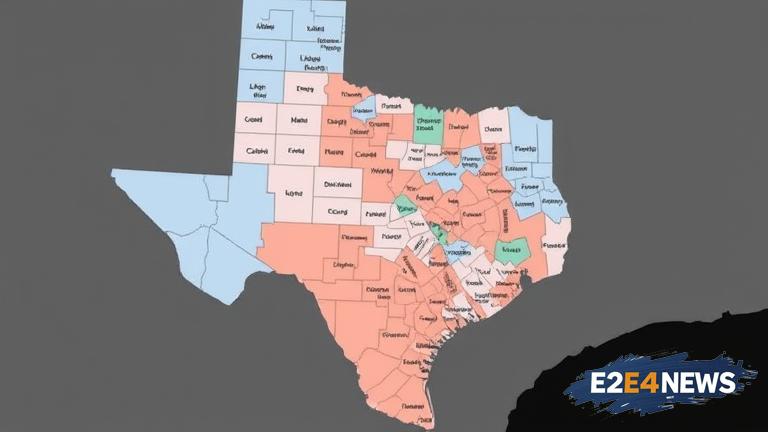The Texas redistricting map, which was recently approved by the state’s Republican-controlled legislature, has been criticized by Democrats for its alleged gerrymandering and discriminatory effects on minority voters. The map, which was backed by former President Donald Trump, is seen as a key component of the Republican Party’s strategy to maintain control of the state’s congressional delegation. However, Democrats argue that the map is a blatant attempt to suppress the voting power of minority communities, particularly Latinos and African Americans. The map has been criticized for packing minority voters into a limited number of districts, while spreading Republican voters across multiple districts to maximize their influence. This tactic, known as ‘cracking,’ is seen as a way to dilute the voting power of minority communities and limit their ability to elect representatives of their choice. Democrats have also accused Republicans of using the redistricting process to protect incumbent lawmakers and maintain their grip on power. The map has been praised by Republicans, who argue that it is a fair and balanced representation of the state’s electoral landscape. However, Democrats counter that the map is a clear example of partisan gerrymandering, which is prohibited by the Voting Rights Act. The controversy surrounding the Texas redistricting map is just the latest example of the ongoing debate over voting rights and electoral fairness in the United States. The issue has been the subject of numerous court challenges and has sparked heated debates in state legislatures across the country. In Texas, the redistricting map has been met with widespread criticism from civil rights groups and minority advocacy organizations. These groups argue that the map is a clear attempt to undermine the voting power of minority communities and limit their ability to participate in the democratic process. The map has also been criticized by some Republicans, who argue that it is too extreme and could ultimately backfire on the party. Despite the controversy, the Texas redistricting map is likely to stand, at least for the time being. The map has already been approved by the state legislature and is currently being reviewed by the US Department of Justice. However, Democrats have vowed to continue fighting the map, both in court and through public advocacy campaigns. The issue is likely to remain a major point of contention in the upcoming midterm elections, with Democrats using it as a rallying cry to mobilize minority voters and turn out the vote. The controversy surrounding the Texas redistricting map is also likely to have implications for the broader debate over voting rights and electoral fairness. As the country continues to grapple with issues of voter suppression and partisan gerrymandering, the Texas redistricting map is seen as a key test case for the ongoing struggle for democratic representation. The map has sparked widespread outrage and condemnation from civil rights groups and minority advocacy organizations, who argue that it is a clear attempt to undermine the voting power of minority communities. The issue has also been the subject of numerous editorials and opinion pieces, with many commentators arguing that the map is a clear example of partisan gerrymandering. Despite the controversy, the Texas redistricting map is likely to remain in place, at least for the time being. However, Democrats have vowed to continue fighting the map, both in court and through public advocacy campaigns. The issue is likely to remain a major point of contention in the upcoming midterm elections, with Democrats using it as a rallying cry to mobilize minority voters and turn out the vote.
